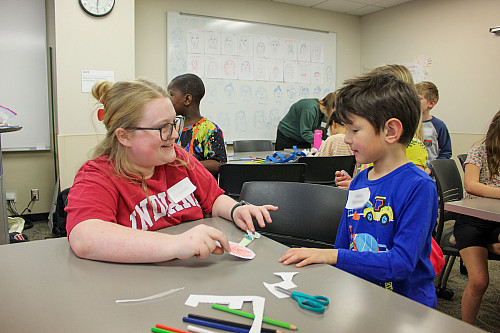The total solar eclipse approaching April 8 is providing a unique learning opportunity across the state, and Indiana University educational science programs in Indianapolis and Bloomington are preparing educators and students for this astronomical event.
At the School of Education in Bloomington, the spring session of the Saturday Science Quest for Kids program is taking K-6 students on an educational journey to understand what the total solar eclipse is, why it happens and how it affects our natural surroundings. The program serves as a practical teaching experience for junior or senior undergraduate education students. They learn to take on the full responsibility of a classroom and design STEM-integrated lesson plans around a theme each fall and spring semester.
Paul Shircliff, maker education specialist at the School of Education in Bloomington, made it his mission to bring maker education to K-12 schools in the Uplands region in southern Indiana and across the state. He works with schools to set up a temporary makerspace environment using the Uplands Maker Mobile, which is full of 3D printers, Cricut machines, carpentry tools and more. In anticipation of the total solar eclipse, he’s been being leading eclipse activities at some elementary schools.
Adam Scribner, director of STEM education initiatives for the School of Education in Bloomington, hosted an event for science educators to learn more about the eclipse through IU astronomy expert Catherine Pilachowski. Scribner has been leading the Educating for Environmental Change program since 2017, providing professional development programs to K-12 science educators. In addition to summer intensives and weekend workshops, the program hosts “First Tuesdays” evening lecture events. April’s session was all about the total solar eclipse in Indiana.
Read more about what the IU School of Education has done to bring lessons about the eclipse to life at News at IU.


